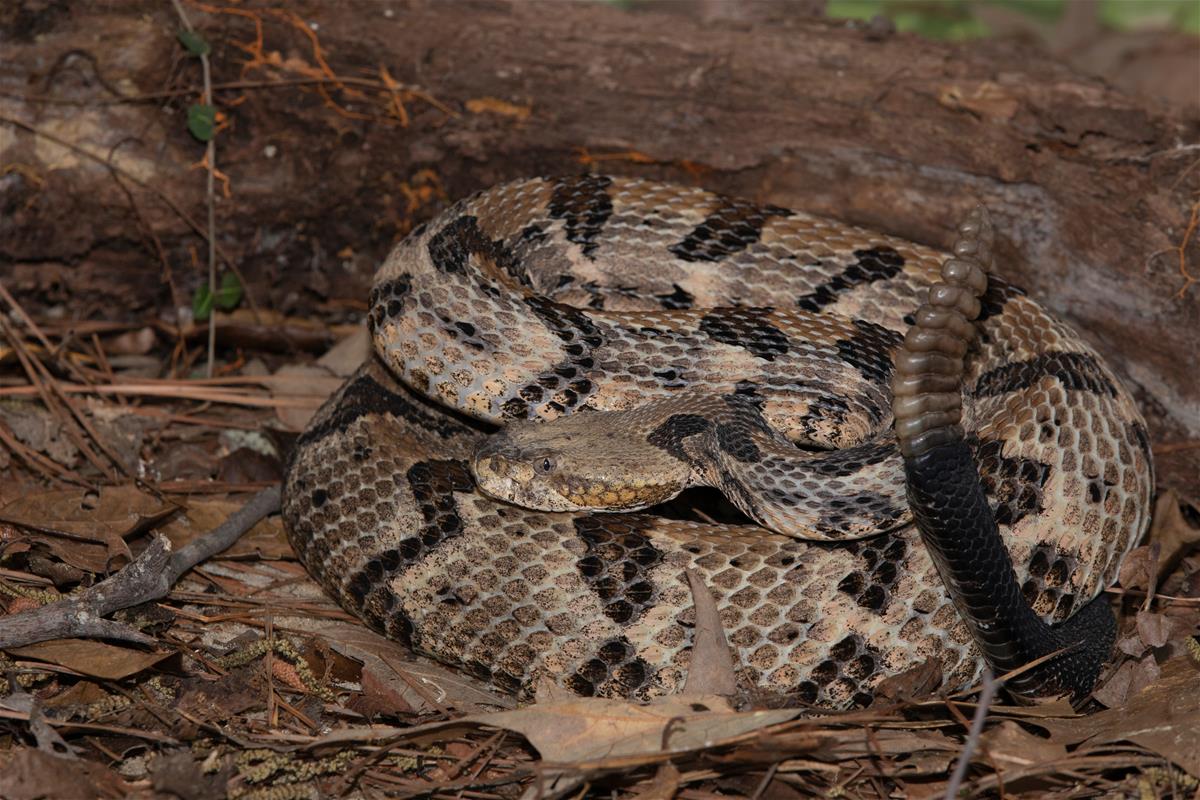Viewable


Location at the Zoo
Americas
Global Range
North America
Timber rattlesnake
Crotalus horridus
The Timber rattlesnake is a large, venomous pit viper with a thick body and a distinctive rattle at the end of its tail. It typically has a pattern of dark, V- or M-shaped crossbands over a background that ranges from yellowish-brown to grey or even black. Its head is broad and triangular, and it has heat-sensing pits between the eyes and nostrils for detecting warm-blooded prey.
Conservation Status: IUCN

Distribution
Found in deciduous forests, rocky outcrops, and rugged hillsides throughout much of the eastern United States.
Habitat
Prefers mixed hardwood forests, ridges, and rocky ledges. In northern areas, it often hibernates communally in dens, returning to the same site annually.
Diet
Carnivorous, feeding primarily on small mammals like mice, rats, chipmunks, and squirrels. Occasionally eats birds and amphibians. It uses venom to immobilize prey before swallowing it whole.
Reproduction
Timber rattlesnakes mate in late summer, with females giving birth to 4 to 14 live young the following year after a gestation period of about 4 to 5 months. Young are born fully formed and venomous. Females may only reproduce every 2 to 4 years.
Adaptation
Equipped with heat-sensing pits to locate warm-blooded prey, venom to subdue it, and a cryptic colour pattern for camouflage in forest environments. The rattle serves as a defensive warning to potential predators, helping avoid conflict.
Threats to Survival
Habitat fragmentation, road mortality, and intentional killing by humans are the major threats. Collection for the pet trade and rattlesnake roundups in some areas also contribute to population declines. Because of their long lifespan and slow reproduction, even moderate losses can impact local populations significantly.












